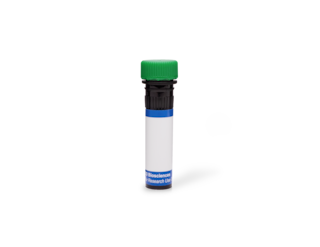-
Reagents
- Flow Cytometry Reagents
-
Western Blotting and Molecular Reagents
- Immunoassay Reagents
-
Single-Cell Multiomics Reagents
- BD® OMICS-Guard Sample Preservation Buffer
- BD® AbSeq Assay
- BD® Single-Cell Multiplexing Kit
- BD Rhapsody™ ATAC-Seq Assays
- BD Rhapsody™ Whole Transcriptome Analysis (WTA) Amplification Kit
- BD Rhapsody™ TCR/BCR Next Multiomic Assays
- BD Rhapsody™ Targeted mRNA Kits
- BD Rhapsody™ Accessory Kits
- BD® OMICS-One Protein Panels
-
Functional Assays
-
Microscopy and Imaging Reagents
-
Cell Preparation and Separation Reagents
-
- BD® OMICS-Guard Sample Preservation Buffer
- BD® AbSeq Assay
- BD® Single-Cell Multiplexing Kit
- BD Rhapsody™ ATAC-Seq Assays
- BD Rhapsody™ Whole Transcriptome Analysis (WTA) Amplification Kit
- BD Rhapsody™ TCR/BCR Next Multiomic Assays
- BD Rhapsody™ Targeted mRNA Kits
- BD Rhapsody™ Accessory Kits
- BD® OMICS-One Protein Panels
- Denmark (English)
-
Change location/language
Old Browser
This page has been recently translated and is available in French now.
Looks like you're visiting us from {countryName}.
Would you like to stay on the current location site or be switched to your location?
BD Transduction Laboratories™ Purified Mouse Anti-ALDH
Clone 44/ALDH (RUO)





Western blot analysis of ALDH on A431 cell lysate. Lane 1: 1:500, lane 2: 1:1000, lane 3: 1:2000 dilution of anti-ALDH antibody.

Immunofluorescent staining of HepG2 cells with anti-ALDH.




Regulatory Status Legend
Any use of products other than the permitted use without the express written authorization of Becton, Dickinson and Company is strictly prohibited.
Preparation And Storage
Recommended Assay Procedures
For Western blot: Please refer to http://www.bdbiosciences.com/support/resources/cell_biology/index.jsp
Product Notices
- Since applications vary, each investigator should titrate the reagent to obtain optimal results.
- Caution: Sodium azide yields highly toxic hydrazoic acid under acidic conditions. Dilute azide compounds in running water before discarding to avoid accumulation of potentially explosive deposits in plumbing.
- Source of all serum proteins is from USDA inspected abattoirs located in the United States.
- Please refer to www.bdbiosciences.com/us/s/resources for technical protocols.
Companion Products


Aldehyde dehydrogenase (ALDH) is a ubiquitous enzyme located in nearly all mammalian tissues. It catalyzes the irreversible oxidation of a range of aliphatic and aromatic aldehydes to their corresponding carboxylic acids. There are multiple isoforms of ALDH which are subdivided into three classes. Class I includes the cytosolic isoforms. Class II includes the mitochondrial isoforms. Class III includes the microsomal, cytosolic tumor specific, and cytosolic dioxin-inducible forms. At least twelve human ALDH isoforms have been identified. Mutations of many of these proteins such as ALDH1, ALDH2, ALDH4, and ALDH10 have been implicated in multiple human metabolic disorders and clinical abnormalities. At the amino acid level, human ALDH isoforms exhibit a wide range of diversity (15% to about 80%). However, multiple protein regions have been highly conserved and are important for functional activities. A well-characterized member of the human ALDH family is ALDH1. It plays a major role in the biosynthesis of retinoic acid from retinol (vitamin A). Retinoic acid, the biologically active form of retinol, is a regulator of cellular proliferation, differentiation, and survival.
Development References (4)
-
Greene WK, Bahn S, Masson N, Rabbitts TH. The T-cell oncogenic protein HOX11 activates Aldh1 expression in NIH 3T3 cells but represses its expression in mouse spleen development. Mol Cell Biol. 1998; 18(12):7030-7037. (Biology). View Reference
-
Kathmann EC, Lipsky JJ. Cloning of a cDNA encoding a constitutively expressed rat liver cytosolic aldehyde dehydrogenase. Biochim Biophys Acta. 1997; 236(2):527-531. (Biology). View Reference
-
Yoshida A, Rzhetsky A, Hsu LC, Chang C. Human aldehyde dehydrogenase gene family. J Biol Chem. 1998; 251(3):549-557. (Biology). View Reference
-
Zhou JH, Hanna EY, Roberts D, Weber RS, Bell D. ALDH1 immunohistochemical expression and its significance in salivary adenoid cystic carcinoma. Head & Neck. 2012; 35(4):575-578. (Clone-specific: Immunohistochemistry). View Reference
Please refer to Support Documents for Quality Certificates
Global - Refer to manufacturer's instructions for use and related User Manuals and Technical data sheets before using this products as described
Comparisons, where applicable, are made against older BD Technology, manual methods or are general performance claims. Comparisons are not made against non-BD technologies, unless otherwise noted.
For Research Use Only. Not for use in diagnostic or therapeutic procedures.